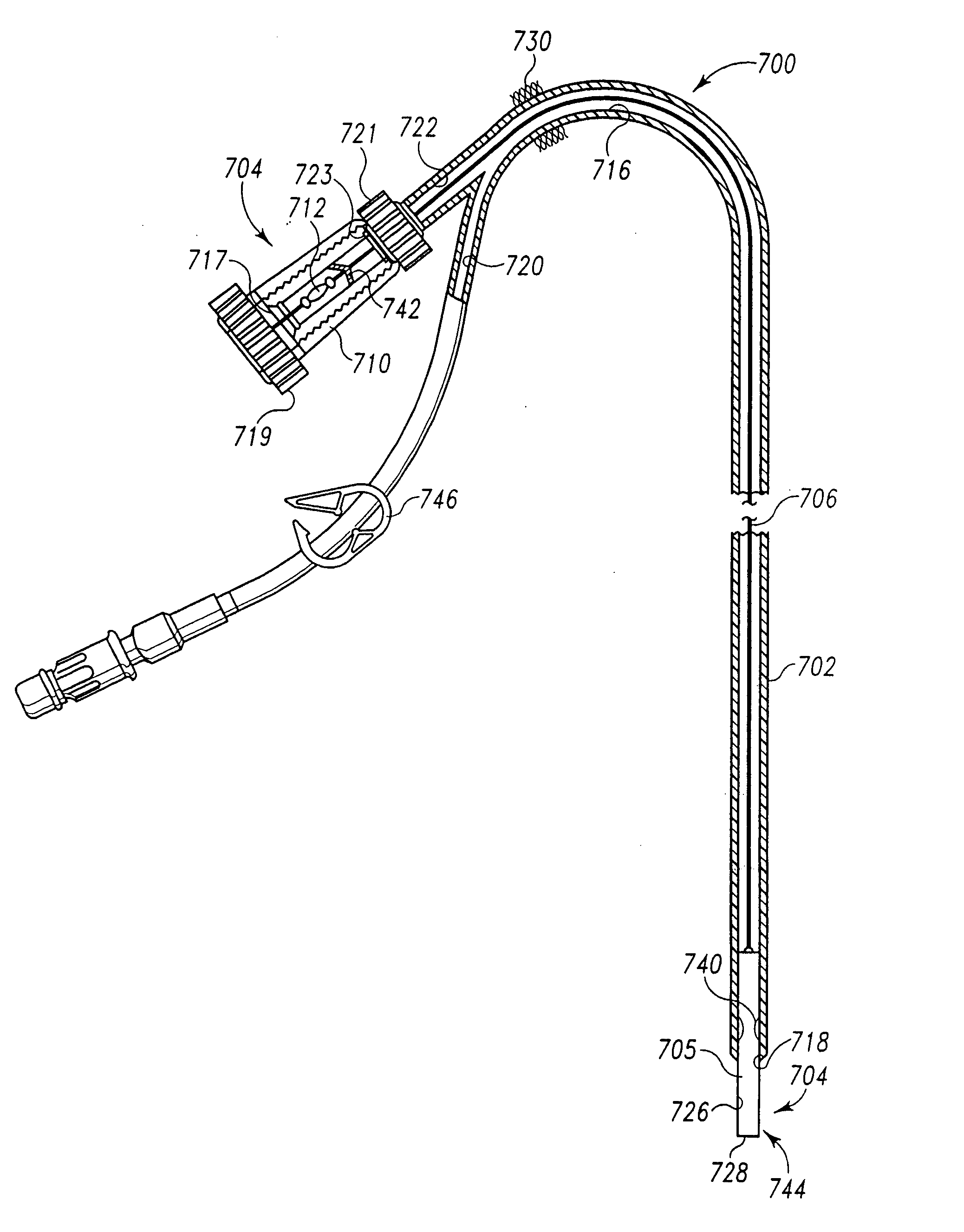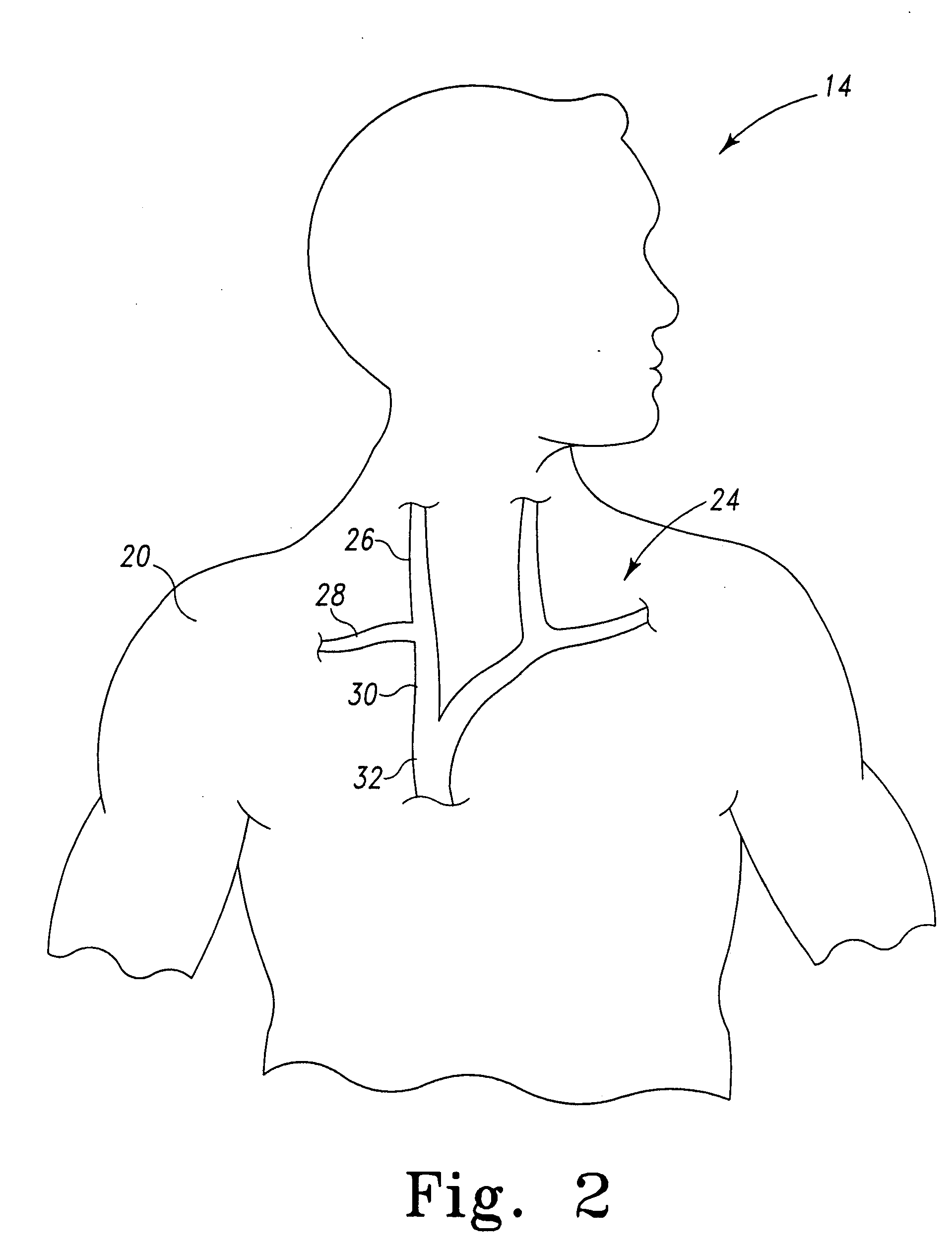Methods of performing medical procedures with catheter systems having movable member
a technology of movable members and catheters, applied in the field of catheters, can solve the problems of patient progressive loss of other conventional long-term vascular access possibilities, two catheterization techniques are significantly different in their complexity and degree of invasiveness
- Summary
- Abstract
- Description
- Claims
- Application Information
AI Technical Summary
Benefits of technology
Problems solved by technology
Method used
Image
Examples
Embodiment Construction
[0104] While the invention is susceptible to various modifications and alternative forms, specific embodiments thereof have been shown by way of example in the drawings and will herein be described in detail. It should be understood, however, that there is no intent to limit the invention to the particular forms disclosed, but on the contrary, the intention is to cover all modifications, equivalents, and alternatives falling within the spirit and scope of the invention as defined by the appended claims.
[0105] Referring now to FIG. 1, there is shown a hemodialysis machine 10 to which is attached a long-term catheter system 12 which incorporates the features of the present invention therein. The catheter system 12 is inserted in a patient's body 14. The hemodialysis machine 10 includes an inlet line 16 and an outlet line 18 which are each in fluid communication with the catheter system 12. The body 14 includes skin, generally indicated by the reference numeral 2...
PUM
 Login to View More
Login to View More Abstract
Description
Claims
Application Information
 Login to View More
Login to View More - R&D
- Intellectual Property
- Life Sciences
- Materials
- Tech Scout
- Unparalleled Data Quality
- Higher Quality Content
- 60% Fewer Hallucinations
Browse by: Latest US Patents, China's latest patents, Technical Efficacy Thesaurus, Application Domain, Technology Topic, Popular Technical Reports.
© 2025 PatSnap. All rights reserved.Legal|Privacy policy|Modern Slavery Act Transparency Statement|Sitemap|About US| Contact US: help@patsnap.com



